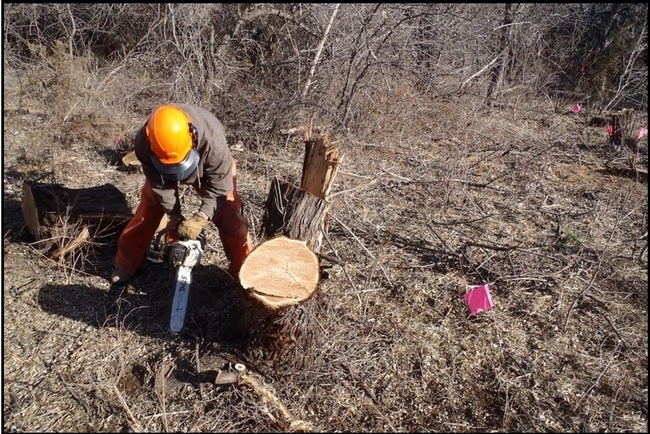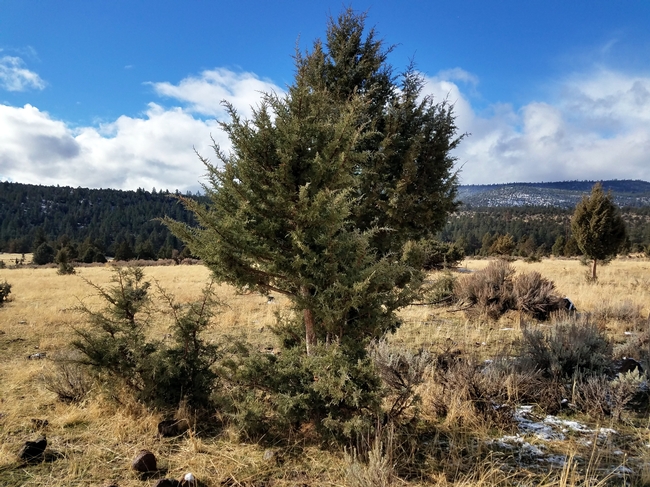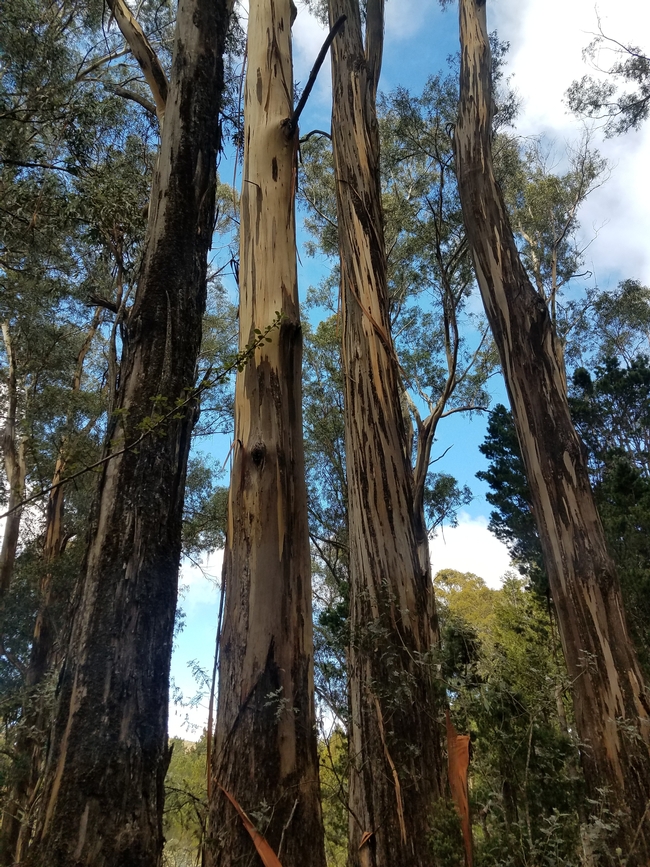While typically associated with timber production and arborists, chainsaws are one of the tools available to those tasked with removing non-desirable woody vegetation. What a fun, powerful, and dangerous tool they are! Ranging from small light electric saws to two-stroke saws with 30 inch bars, there is a chainsaw manufactured to fit your needs. After working a saw all day, the old adage “less is more” may come to mind, as smaller saws are easier to handle over long hours.
Recently, I have been helping out with a document focused on non-chemical control methods for weeds. While contributing to the section on chainsaws, it made me reminiscent of work I conducted in graduate school. The project I worked on focused on removing Russian olive, which is invasive within riparian areas of the arid west. I thought it would be worthwhile sharing a few tips and pointers when considering using a saw, and what to do after the cut has been made.
The first step to using a saw is being comfortable with the tool's operation. This point cannot be overstated! Even small saws have tremendous potential to injure the user. Likewise, trees are large heavy objects that have potential to injure or damage anyone or anything within the height of the tree. Even straight trees do not always fall where the feller intends. Training in proper felling technique is the second point, which cannot be overstated. Personal protective equipment is essential: gloves, helmet, face shield, ear protection, and a good pair of chaps are all necessary.
I am not going to get into the details of chainsaw operation, as I want to focus on what happens after the cut. However, there are three tips I want to share:
- Keep the area around your feet clear while making a cut, and always have an escape path if things do not go as planned.
- Proper chain tension is essential - too tight and the chain will not spin, too loose and it can come flying off the from the bar at high velocity. (It only takes throwing a chain once to pay close attention.)
- Use the chain brake whenever an active cut is not being conducted. The chain brake keeps the chain from moving and is there to keep you safe.
For effective control, cuts need to be made low to the ground, as tall stumps can be cumbersome for future management actions on site. Sometimes a low cut is best achieved by felling the tree first, and making a second cut of the shorter stump close to the ground. Rocks, dirt and terrain can often prevent a low cut being made in all instances. Keeping the chain free of debris is essential to keeping the teeth sharp and functioning properly. Keeping the chain clean, while making a low cut is a fine line, and may be a bit of a catch-22 situation. Rocks can be especially problematic, especially in the heat of the summer when a single spark can start a fire.
Coniferous tree species are an excellent target for control with chainsaws. Western Juniper, a native species, has expanded its range in the Intermountain Region of California over the past 100 years, as land management practices such a fire suppression have changed. Chainsaws are one of the first tools mangers reach for to remove large juniper trees in restoration projects, with goals such as protecting sage grouse habitat. Coniferous species typically will not re-sprout after being cut low to the ground, below any green material. (However, there have been reports of occasional re-sprouts from juniper.) The general lack of suckering/sprouting from conifers make chainsaws an excellent tool to remove the woody vegetation. After the trees are cut, it is still important to monitor these areas for saplings initially missed, or for new seedlings.
Above: Large and small juniper in Lassen county. Notice the expanse of juniper on the hills in the distance.
Many of the invasive tree species in our state are deciduous, and deciduous trees are typically not as easy to manage with chainsaws alone. Eucalyptus, tree-of-heaven, and tamarix, are just some examples of deciduous woody species that are invasive within California. Unlike coniferous tree species, many deciduous trees will vigorously re-sprout from the stump or roots after being cut. Chainsaws are a good choice to remove mature vegetation, but they must be combined with secondary control methods to kill the roots. Continual cutting of the regrowth multiple times a year for multiple years will suppress the root system, but may not kill it. Chainsaws are one of the tools used to trim suckers, but other tools such as sawzall's, loppers, or brush cutters may be more effective. Suckers can also be dealt with using a physical barrier. Tarps, black plastic, or rubber can be stretched over the stumps after cutting to physically prevent sprouts from reaching any sunlight. For some deciduous woody species, there has been evidence that cutting before the dry season can help limit the number of suckers which grow after cutting.
Above: A chainsaw would be the tool needed cut these Eucalyptus. Follow up with herbicides or tarps would be needed to control the regrowth.
Chainsaws are often combined with an herbicide application for woody vegetation control. The applications are referred to as “cut stump” treatments on various product labels. Two of the most common herbicides used are triclopyr and glyphosate. (Many other herbicides are also labeled for cut stump treatments). Ideally, the tree should be felled and applications should be made to a fresh cut where the concentrated herbicide can be painted or sprayed onto the stump. It is important to get adequate coverage of the cambial layer (inner bark) on the surface of the cut, and down the bark on the shoulder of the stump. These systemic herbicide applications will translocate down to the roots of the removed woody vegetation, helping to prevent suckering. Cut stump treatments are not just used for invasive plants, but can also be an effective way to deal with sprouting stumps in urban landscapes.
Whatever invasive woody vegetation is being targeted with chainsaws, it is important to monitor the site for trees that may have been missed, suckers from old root systems, or seedlings germinating in from the seedbank.
This article first appeared in the UC Weed Science blog.


